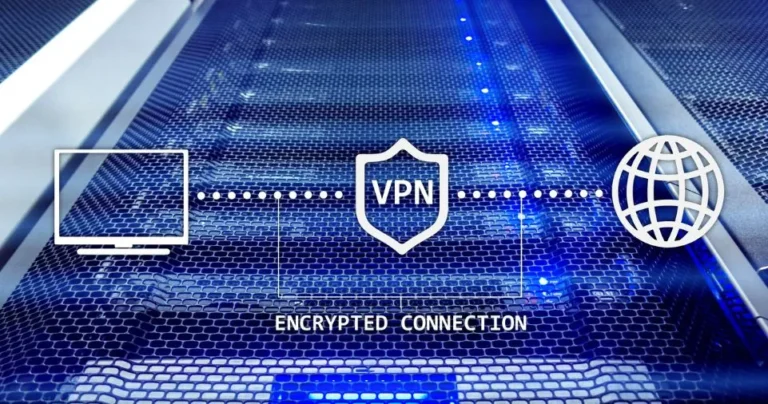When working with network configurations or developing web applications, you might encounter the cryptic address “127.0.0.1:62893.”
Understanding what this code represents and how it works can help you solve a wide range of technical issues.
Whether you’re a web developer, network administrator, or simply troubleshooting IT problems, knowing how to handle errors related to this address is essential.
In this guide, we’ll explore what 127.0.0.1:62893 means, why it’s important, and common errors and solutions related to this address.
What is 127.0.0.1:62893?
At its core, the address 127.0.0.1:62893 is a combination of an IP address and a port number.
To understand its significance, it’s important to break it down into its components:
127.0.0.1 – Localhost Address
The IP address 127.0.0.1 is often referred to as the “localhost” or “loopback” address. It’s a reserved address that allows a computer to communicate with itself internally.
When you send a request to 127.0.0.1, the data never leaves your machine. Instead, it loops back and is processed internally.
This makes it useful for testing purposes and local development since no external internet connection is needed.
62893 – Port Number
The number 62893 represents a specific port on the computer. Ports function as communication channels that allow different services and applications to interact with each other.
Port 62893, while not commonly associated with well-known services, might be used by development tools or services like Memcached, a caching system.
Key Functions of 127.0.0.1:62893
127.0.0.1:62893 plays a crucial role in various aspects of computing and networking. Below are some of its primary functions:
Local Development and Testing
Web developers often use the localhost (127.0.0.1) to run web applications locally before deploying them online.
By using specific ports, they can host different projects simultaneously on their machine, ensuring they don’t conflict with one another.
Networking Concepts
Understanding how the localhost and specific ports interact is fundamental to mastering networking concepts.
It helps developers simulate client-server communication without involving external networks, making it easier to debug issues.
Enhanced Security
By confining certain services to localhost, you reduce exposure to external threats.
You can configure services to be accessible only on your local machine by limiting their interaction to 127.0.0.1, which increases overall security.
Troubleshooting Network Issues
The localhost address is often used for debugging. By monitoring activity on specific ports, like 62893, you can identify issues related to services or applications not functioning as intended.
Port Management
Different ports on localhost can be configured to host various services, allowing you to isolate and test them independently.
This flexibility is especially useful for developers working on multiple projects or troubleshooting issues with specific applications.
Common Errors Related to 127.0.0.1:62893
Despite its usefulness, errors involving 127.0.0.1:62893 can occur, particularly during software development or configuration. One common error message you might encounter is:
“Disconnected from the target VM, address: 127.0.0.1:62893”
This error typically indicates a problem where a debugging tool or service cannot connect to a specified virtual machine (VM) on your localhost.
Here’s a detailed breakdown of why this error happens and how to fix it.
Causes of the “Disconnected from the Target VM” Error
Service Not Running
The most common cause of this error is that the service or application you’re trying to connect to isn’t running on port 62893.
If the service is inactive, your tool won’t be able to establish a connection.
Port Conflict
If multiple services are configured to use the same port, you might experience a port conflict.
In such cases, only one service can operate on that port, causing connection failures for others.
Firewall Restrictions
Your firewall might be blocking access to port 62893. Firewalls are designed to control network traffic, and unless you’ve configured it to allow specific ports, connections to those ports will be rejected.
Incorrect Configuration
A simple misconfiguration in the application or service setup could prevent proper communication.
Double-checking port assignments or configuration files is often a necessary step.
How to Fix Errors Related to 127.0.0.1:62893
Check if the Service is Running
Ensure that the service or application you are trying to connect to is running.
For instance, if you’re using a database or a local web server, confirm that it’s active by checking its status via the command line or system services.
Verify Port Number Configuration
Double-check the application’s configuration to ensure it’s using the correct port number.
If port 62893 is specified, ensure no other application is using the same port to avoid conflicts.
Modify Firewall Settings
If your firewall is blocking the port, you’ll need to modify the settings to allow access. Here’s how you can do it:
On Windows:
- Open the Control Panel and go to System and Security > Windows Defender Firewall > Advanced Settings.
- Under Inbound Rules, create a new rule that allows traffic through port 62893.
On macOS/Linux:
- Use terminal commands like
iptablesorfirewalldto add an exception for port 62893. For example:bashCopy codesudo iptables -A INPUT -p tcp --dport 62893 -j ACCEPT
Use Diagnostic Tools
Diagnostic tools like netstat (on Windows) or lsof (on macOS/Linux) can help you identify which services are currently using specific ports.
These tools allow you to detect port conflicts and identify the source of the issue.
Restart the Service
If all else fails, try restarting the service or application. Sometimes, services may hang or fail to start properly, and a restart can resolve the issue.
Real-World Examples of Using 127.0.0.1:62893
Example 1: Local Web Development
Imagine you’re a web developer working on a new project using Node.js. You want to test your application locally before deploying it.
You configure your web server to listen on 127.0.0.1:62893. By accessing http://127.0.0.1:62893 in your browser, you can interact with the application as if it were live, without exposing it to the internet.
Example 2: Database Management
If you’re managing a local database on your machine, you may configure it to use port 62893.
This ensures that only local applications can access the database, adding an extra layer of security by keeping it isolated from external access.
Is it Safe to Expose Port 62893 Publicly?
In general, exposing port 62893 (or any port) to the public internet is not advisable unless absolutely necessary. Here’s why:
- Security Vulnerabilities: If a service running on port 62893 has security flaws, attackers can exploit them to gain unauthorized access to your system.
- Denial-of-Service (DoS) Attacks: By targeting open ports, hackers can flood them with requests, leading to service disruptions or crashes.
- Unauthorized Access: By exposing port 62893, you increase the risk of external users attempting to connect to the service, potentially leading to data breaches.
If you must expose a port to the internet, ensure you have strong security measures in place, such as using a VPN, firewall rules, and strong authentication protocols.
ALSO READ
Conclusion
The address 127.0.0.1:62893 is an important tool for local development, testing, and network troubleshooting.
By understanding how this address and port system works, you can enhance your ability to develop and maintain applications in a secure, isolated environment.
Whether you’re a seasoned developer or just starting out, mastering localhost and port configurations will empower you to work more efficiently and securely.
Always ensure services running on specific ports are properly configured, and if errors arise, use diagnostic tools to identify and resolve them.
And remember, never expose sensitive ports like 62893 to the public without the necessary security precautions.







